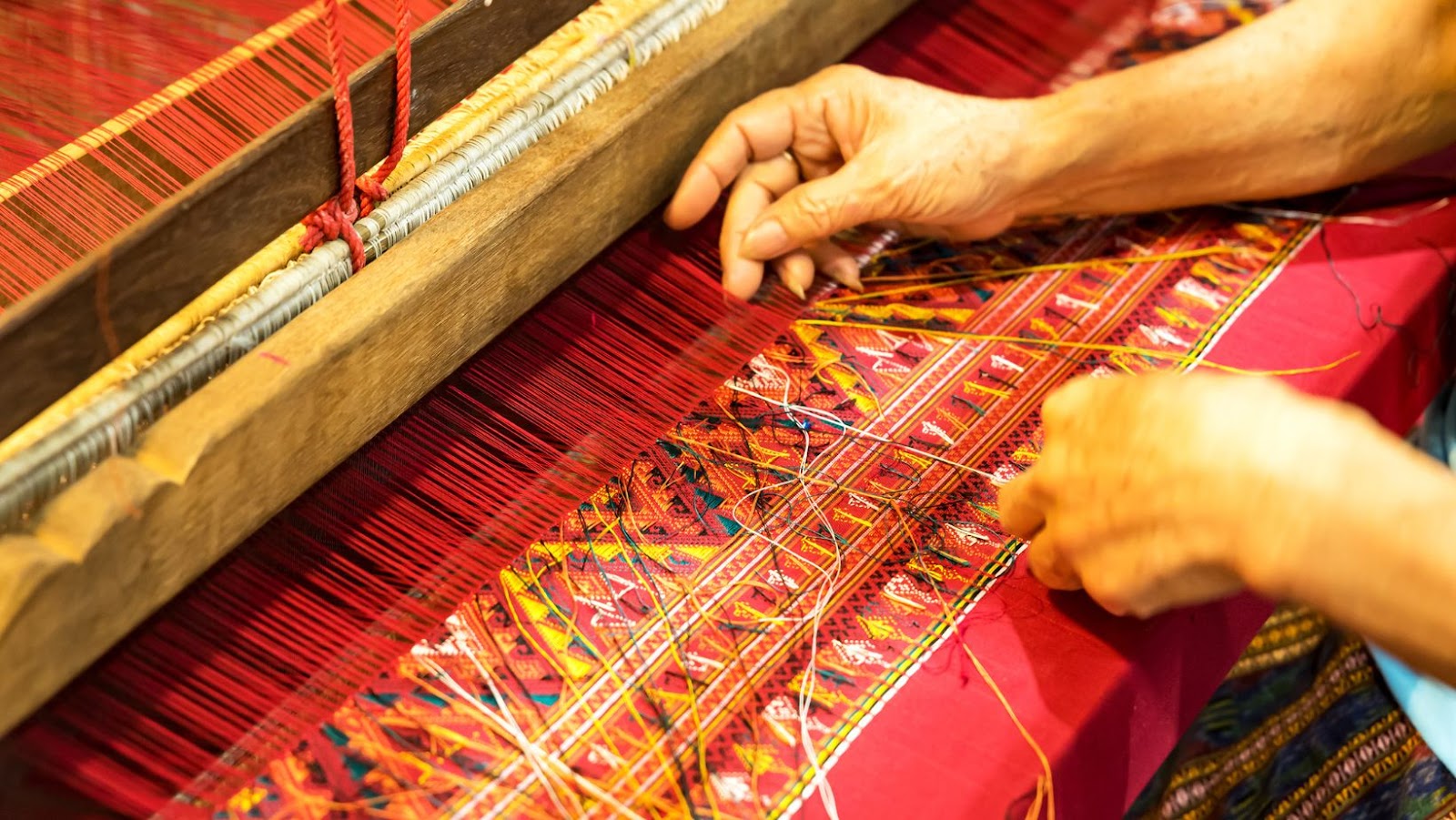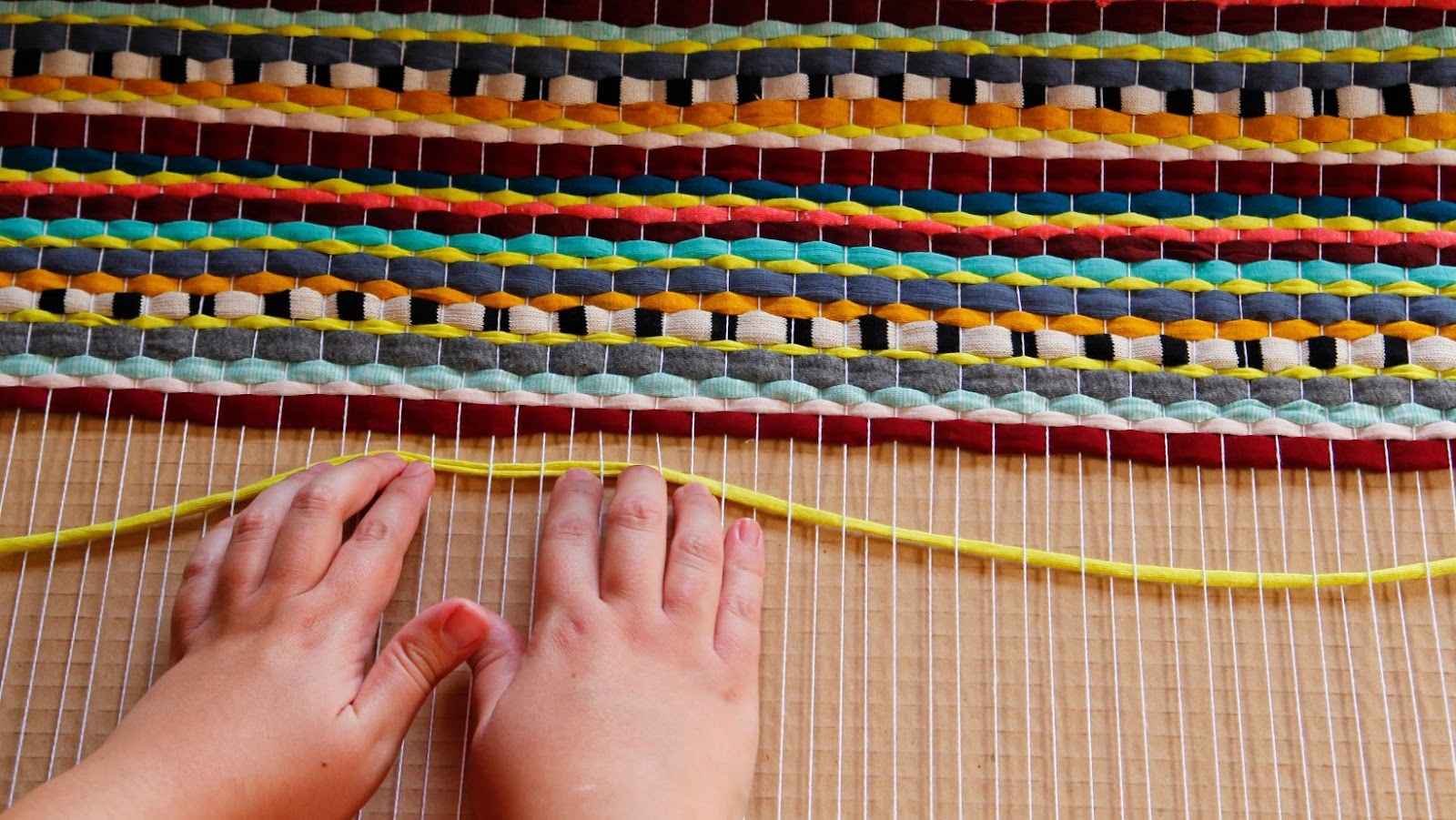
The Different Types of Weaving
Weaving is the act of creating fabric by interlacing warp and weft yarns. From Tapestry weaving, Basket weaving to Rug weaving, there are various types of Weaving techniques that exist worldwide. Whether it is the traditional or modern style of Weaving, every type is unique in its own way. In Tapestry weaving, intricate designs are made by hand while in Basket weaving, small pieces of material like grass and reeds are used to create baskets. The technique used in Rug weaving produces durable and visually appealing rugs that last for decades.
If you want to explore a new art form, then consider Weaving which offers endless possibilities to create masterpieces out of just yarns and threads!
Let’s weave our way through the different types of weaving techniques and unravel the mystery behind this ancient art form
What is Weaving
Exploring the Art of Weaving
Weaving is a time-honored practice involving the interlacing of threads to create a fabric. Understanding different weaving techniques can help you appreciate and identify distinct patterns and designs, which vary based on the type of loom used.
A table demonstrating weaving techniques is as follows:
| Technique | Description |
| Plain weave | The simplest technique in which weft yarn passes under and over warp yarns alternately |
| Twill weave | A diagonal pattern created by skipping one or more warp yarns in each row |
| Satin weave | Characterized by long floats of weft yarn passing over warp threads, creating a smooth appearance |
| Dobby weave | Utilizes small, geometrically-shaped repeating patterns woven into the fabric |
| Jacquard weave | Produces highly intricate woven patterns using computer-controlled looms |
When using the dobby or jacquard weaving techniques, multiple colors and complex shapes can be included. Weaving plays an integral role in many cultures across the world and has evolved with our times – tech-savvy machines being utilized for exquisite designs today.
Don’t miss out on experiencing the beauty of various weaving techniques! With unique patterns conveying rich cultural heritage, it’s worth investing in handcrafted woven clothing or home decor to appreciate this artistic craft.
You may think weaving is a dying art, but these traditional methods from around the world will warp your expectations.
Traditional Weaving Methods around the World
Exploring the World’s Traditional Weaving Techniques
Traditional weaving techniques have been passed down from generation to generation and vary across different regions of the world. Here is an overview of some popular weaving methods found worldwide.
| Region | Weaving Method | Materials Used |
| Asia | Backstrap Weaving | Cotton, Silk, Wool |
| Africa | Kente Weaving | Raffia Palm Fibers, Cotton, Silk |
| South America | Andean Weaving | Cotton, Alpaca Wool |
| Europe | Tapestry Weaving | Wool, Linen, Silk |
Beyond these popular techniques, there are unique details and differences that distinguish each regional weaving style. These include the use of natural dyes for coloring yarns and intricate patterns particular to a specific locality.
Take a deeper dive into the history of traditional weaving methods from around the world and learn how they have influenced modern-day fashion. Don’t miss out on discovering these captivating cultural traditions!
Who knew weaving could be so modern? These techniques will have you wondering if you’re crafting a tapestry or a tech gadget.

Modern Weaving Techniques
Weaving is a timeless art that has evolved significantly over time to embrace modern weaving techniques. These techniques are adept, efficient and highly sought-after by many weavers, both amateur and professional.
To explore modern weaving techniques in detail, take a look at this table below:
| Weaving Technique | Description |
| Tapestry Weaving | A technique used to produce wall hangings |
| Loom Weaving | A technique used to weave yarn into fabric |
| Towel Weaving | A technique used to make hand and bath towels |
It is worth noting that there are various kinds of modern weaving techniques such as Wicker Weaving and Basket-Weaving.
Modern weaving techniques provide artists with an opportunity for creativity by experimenting with different materials and textures while still adhering to ancient traditions. Whether you are blending traditional methods with contemporary innovation or introducing new fiber-conscious initiatives, the possibilities for what you can accomplish while weaving exist in plenty.
So what are you waiting for? Incorporate these modern weaving technologies into your work now, go further beyond limits than ever before! From sturdy fabrics for furniture to delicate lace, weaving is the ultimate multitasker of the textile world.
Applications of Weaving
Weaving is a vast field that involves the production of various materials through the interlacing of yarns or threads. Weaving finds numerous applications in everyday life, from clothing to home decor.
| Application | Description |
| Fashion Industry | Weaving plays a significant role in the fashion industry, producing fabrics for clothes, shoes, and accessories. |
| Home Textiles | Weaved items such as curtains, bedspreads, rugs, and carpets add beauty and warmth to living spaces. |
| Industrial Fabrication | Weaving is used to produce materials for industrial purposes such as conveyor belts and filters. |
In addition to these mainstream applications of weaving, it also has niche uses like optical illusions in art. Weaving techniques can create the appearance of depth and three-dimensional shapes by incorporating color gradations.
One remarkable story about weaving comes from Mali’s Dogon tribe. The tribe uses intricate weaving methods using narrow strips of cloth called bogolanfini to produce beautiful geometric patterns on their garments. This art form has been passed down through generations for centuries and is highly valued today.
Weaving may be an ancient art, but with advancing technology, who knows what kind of crazy, futuristic fabrics we’ll be sporting in the years to come!

Conclusion: The Future of Weaving.
The world of weaving is constantly evolving with new technologies, materials and techniques. As the industry adapts to changing consumer demands, weaving has become more sustainable, innovative and accessible for designers around the globe. In recent years, weaving has expanded beyond traditional textiles to include functional and non-functional objects, including apparel, architecture and art installations. With ongoing advancements in digital design and textile engineering, we can only anticipate more exciting possibilities for the future of modern weaving.
As we reflect on the future direction of this timeless craft, it is clear that weaving will continue to play a vital role in the global economy. The production of handmade textiles preserves cultural heritage while machine-woven materials offer mass-market appeal at affordable prices. Furthermore, technological advancements have allowed small-scale artisan studios to use automated looms, broadening their reach and impact.
Looking ahead, it is essential that we embrace sustainable practices when creating textiles through minimizing waste and using eco-friendly materials. Doing so will not only benefit our environment but support our local communities during these challenging times.
Pro Tip: When designing woven pieces of art or apparel, always consider texture and pattern for a unique and timeless style.
